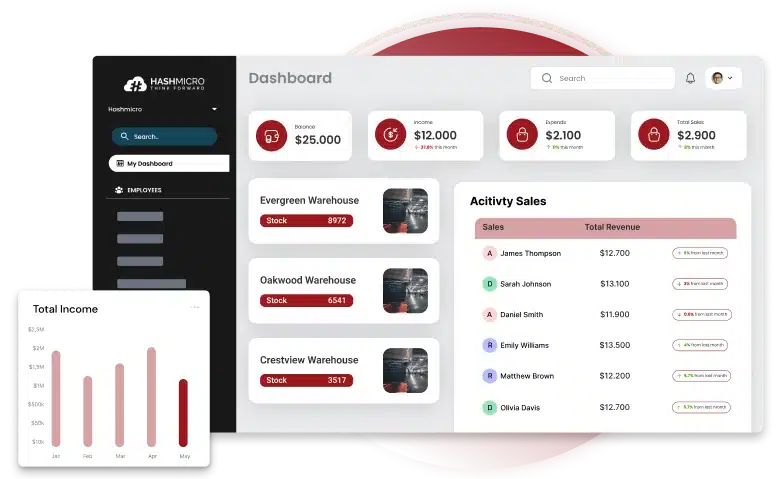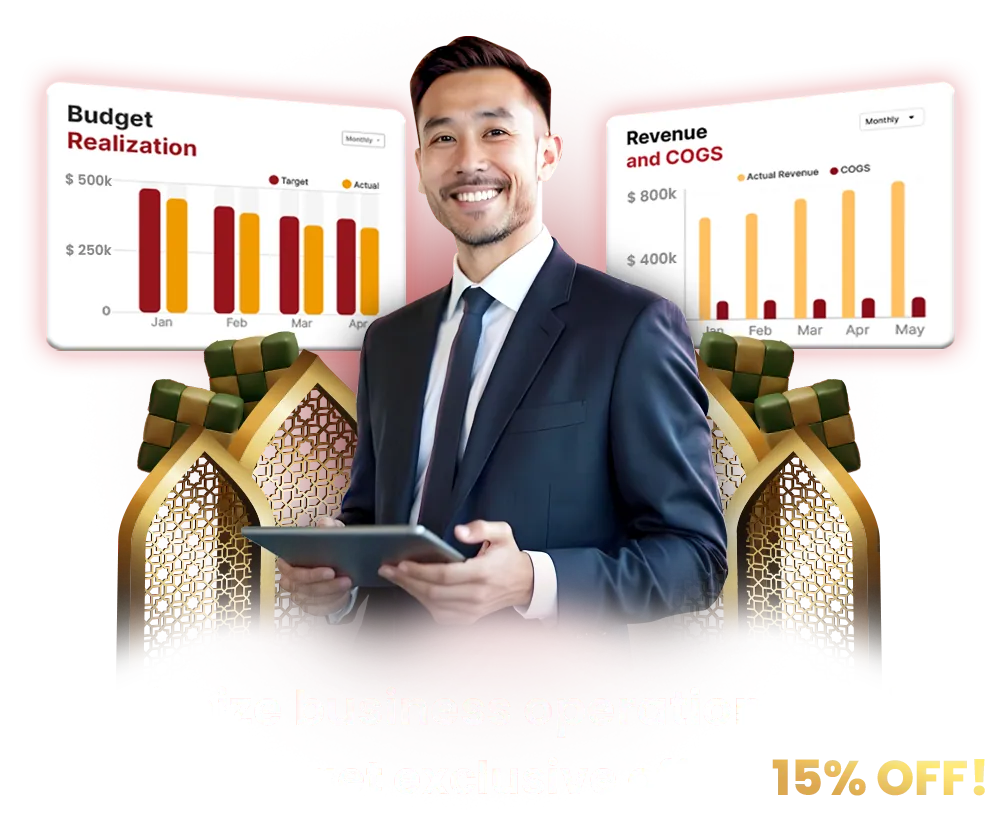As the digital technology has evolved and moves even faster, one question keeps coming up: should you go for cloud ERP or stick with on-premise ERP? Both have their own strengths: cloud ERP brings flexibility and room to grow, while on-premise ERP gives you full control, deeper customisation, and tighter data security.
Each option suits different business needs, so choosing the right one can make a huge difference in how efficiently your company runs. So, do you embrace the modern, scalable cloud ERP, or rely on the solid, tried-and-tested on-premise setup?
In this article, we’ll break down the key differences, pros and cons, and what to consider before making a decision. By the end, you’ll have a clearer idea of which ERP solution can support your business goals.
Key Takeaways
|
Table of Content
Content Lists
What is Cloud ERP?
Enterprise Resource Planning (ERP) is software that helps businesses manage and connect important functions like finance, inventory, and sales. Cloud ERP is a popular type of ERP that runs online and is accessed through a web browser.
Cloud ERP acts like the “brains” of a company, offering advanced tools to handle core business operations. It’s hosted by the software provider and delivered as a service, so companies pay a subscription fee instead of buying the software outright.
There’s no need for expensive hardware, and the provider takes care of updates, data storage, security, and system maintenance. Cloud ERP is also flexible and scalable. It supports remote work and collaboration, making it ideal for businesses with teams in different locations.
What is On-Premise ERP?
On-premise ERP is a traditional type of software that runs on a company’s own servers and is managed by its internal IT team. Unlike Cloud ERP, the company is fully responsible for maintaining and updating the system.
This type of ERP allows for more customization based on specific business needs and works well with other in-house systems. It can be a good option for businesses that require strong control over data or need a highly tailored solution.
The Pros and Cons of Cloud ERP vs. On-Premise ERP
When choosing an ERP system, companies need to consider the advantages and drawbacks of cloud-based and on-premise solutions. Each type offers different benefits that can affect daily operations.
Cloud ERP
- Pros: Cloud ERP gives users easy access to data and tools from anywhere with an internet connection. It’s flexible, can grow with the business, and doesn’t require any hardware. The provider also takes care of updates and security.
- Cons: It depends entirely on internet access. If the connection is unstable, it can interrupt access to important information and slow down work.
On-Premise ERP
- Pros: With on-premise ERP, businesses have full control over their data and systems. Since everything runs on local servers, they can manage security, user access, and updates based on their own policies.
- Cons: This setup requires a large upfront investment in servers and software. It also needs an internal IT team for maintenance, and upgrades can be costly and time-consuming.
The Difference Between Cloud ERP vs. On Premise ERP

Deciding between Cloud ERP and On-Premise ERP depends on a number of key factors. With that being said, here are the key differences between cloud ERP and on-premise ERP, so that you know which version suits you more.
1. Deployment
- Cloud ERP: Hosted on the vendor’s servers and accessed through the internet. This setup removes the need for in-house infrastructure and is quicker to implement.
- On-Premise ERP: Installed on the company’s own servers and managed by internal IT staff. It requires more setup time and technical resources but offers greater control.
2. Accessibility
- Cloud ERP: Can be accessed from anywhere with an internet connection. It’s especially useful for businesses with multiple branches or mobile workforces.
- On-Premise ERP: Access is usually limited to the company’s internal network or specific locations. Remote access is possible but often requires additional setup like VPNs.
3. Scalability
- Cloud ERP: Easily scales to match business growth without the need for extra hardware. Businesses can quickly add new users or features as needs evolve.
- On-Premise ERP: Scaling up often requires hardware upgrades and more IT resources. This can slow down expansion and increase long-term infrastructure costs.
4. Maintenance & Updates
- Cloud ERP: The vendor handles system maintenance, updates, and improvements automatically. This keeps the system up-to-date with minimal effort from the company.
- On-Premise ERP: Updates and maintenance must be managed manually by the in-house IT team. It gives businesses full control, but also adds to the IT workload.
5. Cost
- Cloud ERP: Subscription-based model with lower upfront expenses. It’s more predictable financially and spreads costs over time.
- On-Premise ERP: Requires significant upfront investment for hardware, licenses, and infrastructure. Although costly at the start, it may have fewer recurring fees in the long run.
6. Security
- Cloud ERP: Security, encryption, and compliance are managed by the vendor. Reputable providers offer strong protections, but data is stored offsite.
- On-Premise ERP: Full control over security settings and data protection, but also full responsibility. It suits businesses with strict data governance or industry regulations.
7. Internet Dependency
- Cloud ERP: Needs a stable internet connection to function smoothly. Downtime or poor connectivity can disrupt access to critical data.
- On-Premise ERP: Runs locally and does not rely on internet connectivity. It ensures continued operations even during internet outages.
8. Customization
- Cloud ERP: Offers limited customization based on vendor capabilities. Changes often depend on what the software provider allows.
- On-Premise ERP: Allows extensive customization to meet specific business needs. It’s suitable for companies with unique processes or niche requirements.
Cloud ERP vs. On-Premise ERP: Which One Should You Choose?
Now that you know the main differences between cloud ERP vs. on-premise ERP, the next step is choosing the best ERP software that fits your business. The right solution depends on factors like your company’s size, industry, and operational needs.
When On-Premise ERP makes more sense:
This option is often better for large companies that need full control over their systems due to strict data security or regulatory requirements. It’s also suitable for businesses in areas with unreliable internet, since the system can run without being connected online.
When Cloud ERP is the better fit:
Cloud ERP is a great option for small to mid-sized businesses looking for a more affordable and flexible solution. It comes with lower upfront costs and doesn’t require a dedicated IT team for system maintenance.
It’s also ideal for companies that value remote access and want to scale operations easily as they grow.
Hash Core ERP as the Best ERP for Business

Choosing the right ERP system in Malaysia isn’t just about picking any software; it’s about finding one that actually supports your business goals. Hash Core ERP is trusted by over 2,000 companies across industries like retail, trading, and manufacturing.
This all-in-one ERP system helps businesses automate key processes, and can be deployed both on-premise and cloud. Furthermore, with a free demo and user-friendly design, it’s perfect for both SMEs and large companies looking to scale.
What makes Hash Core especially valuable for Malaysian businesses is its customisable modules, localised features, and affordable pricing. Whether you’re a growing SME in Selangor or an established company in Johor Bahru, the system is designed to grow with you.
Here’s a glimpse of what you get with Hash Core ERP:
- Built-in Business Intelligence (BI): Analyse your data from different angles with smart tools to uncover trends, spot issues, and support strategic planning.
- Automated Bookkeeping: From sales and expenses to bank reconciliation, all your financial transactions are recorded automatically—so you don’t need to rely on manual spreadsheets.
- Production Cost Control: Gain full visibility and control over your production costs—track every sen from raw materials to output, including wastage and defective goods.
- Mobile App Access: Whether you’re on-site, in the office, or working remotely, access the system easily from your mobile device. Available on both iOS and Android via the App Store and Google Play.
- Smart Sheet Management: Manage and automate spreadsheets or business documents securely within the system—great for finance or procurement teams that still rely heavily on Excel.
- Role-Based Access Control: Assign access based on staff roles—ensuring the right people have the right level of access, and sensitive data stays protected.
Conclusion
Cloud ERP and on-Premise ERP both offer unique advantages, depending on your business size, needs, and priorities. Cloud ERP is ideal for flexibility and scalability, while On-Premise suits companies needing full control.
If you’re looking for a smart, practical solution, Hash Core ERP is worth considering. It’s packed with powerful features, super easy to use, and grows with your business effortlessly.
Join over 2,000 companies that trust HashMicro to streamline operations and boost productivity every single day. Request a free demo now and experience how easy running a business can really be!

Frequently Asked Questions on Cloud ERP vs. On-Premise ERP
-
How do cloud ERP and on-premise ERP differ in terms of implementation speed?
Cloud ERP systems typically offer faster implementation times since they are pre-configured by the vendor and require no on-site hardware setup. In contrast, on-premise ERP solutions often involve longer deployment periods due to the need for in-house infrastructure installation and system customization.
-
Which ERP system is more suitable for businesses with limited IT resources?
Cloud ERP is generally more suitable for businesses with limited IT resources, as the vendor manages system maintenance, updates, and security. On-premise ERP requires a dedicated internal IT team to handle these responsibilities, which can be resource-intensive.
-
Can businesses switch from on-premise ERP to cloud ERP, and what are the benefits?
Yes, businesses can migrate from on-premise ERP to cloud ERP. Benefits of such a transition include lower total cost of ownership (TCO), access to the latest software features, enhanced security, and reduced burden on internal IT staff for system maintenance.
-
How do cloud and on-premise ERP systems compare in terms of data backup and disaster recovery?
Cloud ERP providers typically include data backup and disaster recovery services as part of their offerings, leveraging their robust infrastructure to ensure data safety. On-premise ERP systems require businesses to establish and manage their own backup and disaster recovery plans, which can be complex and costly.































